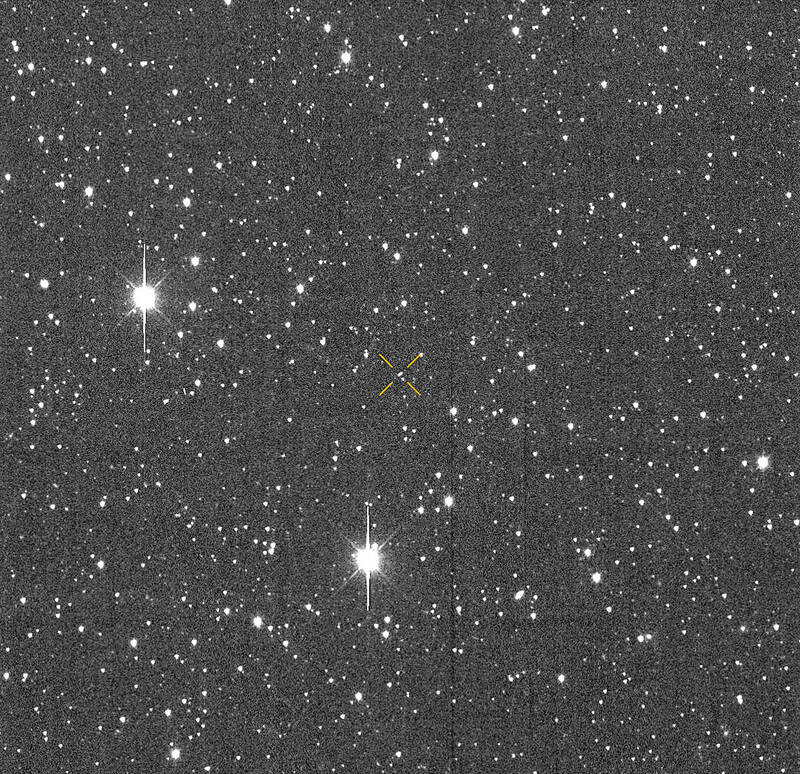China has begun recruiting for a planetary defense force after risk assessments determined that an asteroid could conceivably hit Earth in 2032.
Job ads posted online by China’s State Administration of Science, Technology and Industry for National Defence (SASTIND) this week, sought young loyal graduates focused on aerospace engineering, international cooperation and asteroid detection.
The recruitment drive comes amid increasing focus on an asteroid with a low — but growing — likelihood of hitting earth in seven years. The 2024 YR4 asteroid is at the top of the European and US space agencies’ risk lists, and last week analysts increased their probability assessment of it hitting Earth from 1.3 percent to 2.2 percent. The UN’s Space Mission Planning Advisory Group, comprising countries with space programs including China, have been meeting regularly to discuss a response.

Photo: Reuters
The ads, posted to WeChat earlier this week, listed 16 job vacancies at SASTIND, including three for a new “planetary defense force.” They invited applications from recent graduates aged under 35, with professional and technical qualifications and “a firm political stance” supporting the Chinese Communist party and an ideology aligned with its leader, Xi Jinping (習近平).
The ads prompted widespread online discussion among young people — a demographic that saw unemployment rates reach a record high in 2023.
“The Earth would depend on you three. Isn’t that stressful?” asked one person.

Photo: AFP
“If you succeed, you’re a hero who saves the world,” said another popular comment on Weibo. “But no one would punish you for failing, I mean, there be literally ‘no one’ left.”
Job descriptions attached to the ads suggest the force will have a key focus on international cooperation, and on designing systems for new and experimental technology. The planetary defense force jobs are described as “research on monitoring and early warning of near-Earth asteroids,” and required graduates with a masters degree or higher, with majors in astrophysics, earth and space exploration technology and aerospace science and technology.
China’s aerospace sector is advancing, and it’s not clear the recruitment has been specifically prompted by the discovery of the asteroid. SASTIND did not respond to requests for comment.

Photo: AP
Andrew Jones, a correspondent at SpaceNews specializing in China’s sector, said the timing of recruitment appeared to be coincidental with the discovery of 2024 YR4, and the jobs were likely “supplemental to China’s already established efforts to develop its planetary defense capabilities.”
“This includes monitoring and warning systems, both on the ground and potentially in space, and preparing to test measures such as kinetic impactors to alter the orbits of threatening asteroids.”
Deflecting an asteroid like 2024 YR4 appears to be a key focus of China’s aerospace development, including plans to replicate the 2020 Double Asteroid Redirection Test (Dart), conducted by NASA. The Dart involved crashing a spacecraft into a 160-meter-long asteroid named Dimorphos, successfully diverting its trajectory for the first time. The European Space Agency later launched another spacecraft to observe and report on the impact the Dart had on Dimorphos.
China is also preparing its own asteroid-redirection test, on a smaller asteroid named 2015 XF261, in 2027. But Harrison Agrusa, a planetary scientist at the Observatoire del la Cote d’Azur said there are concerns about the smaller size of the asteroid China is targeting.
“Given what we learned from Dart, a similar impactor mission onto a much smaller target would likely fully disrupt it,” he said. “This may not be the most useful mitigation strategy, as you can potentially create an even bigger problem by turning a single projectile (with a known trajectory) into many fragments (with unknown trajectories).”
Harrison said there was no need to be overly alarmed about 2024 YR4, noting that multiple countries and aerospace organizations were working together on it.
“We know we have the capability to deflect an asteroid like this, as demonstrated by the Dart mission. So this asteroid doesn’t need to be feared, it just needs to be studied and understood.”

As I finally slid into the warm embrace of the hot, clifftop pool, it was a serene moment of reflection. The sound of the river reflected off the cave walls, the white of our camping lights reflected off the dark, shimmering surface of the water, and I reflected on how fortunate I was to be here. After all, the beautiful walk through narrow canyons that had brought us here had been inaccessible for five years — and will be again soon. The day had started at the Huisun Forest Area (惠蓀林場), at the end of Nantou County Route 80, north and east

Specialty sandwiches loaded with the contents of an entire charcuterie board, overflowing with sauces, creams and all manner of creative add-ons, is perhaps one of the biggest global food trends of this year. From London to New York, lines form down the block for mortadella, burrata, pistachio and more stuffed between slices of fresh sourdough, rye or focaccia. To try the trend in Taipei, Munchies Mafia is for sure the spot — could this be the best sandwich in town? Carlos from Spain and Sergio from Mexico opened this spot just seven months ago. The two met working in the

Exceptions to the rule are sometimes revealing. For a brief few years, there was an emerging ideological split between the Democratic Progressive Party (DPP) and Chinese Nationalist Party (KMT) that appeared to be pushing the DPP in a direction that would be considered more liberal, and the KMT more conservative. In the previous column, “The KMT-DPP’s bureaucrat-led developmental state” (Dec. 11, page 12), we examined how Taiwan’s democratic system developed, and how both the two main parties largely accepted a similar consensus on how Taiwan should be run domestically and did not split along the left-right lines more familiar in

This month the government ordered a one-year block of Xiaohongshu (小紅書) or Rednote, a Chinese social media platform with more than 3 million users in Taiwan. The government pointed to widespread fraud activity on the platform, along with cybersecurity failures. Officials said that they had reached out to the company and asked it to change. However, they received no response. The pro-China parties, the Chinese Nationalist Party (KMT) and Taiwan People’s Party (TPP), immediately swung into action, denouncing the ban as an attack on free speech. This “free speech” claim was then echoed by the People’s Republic of China (PRC),